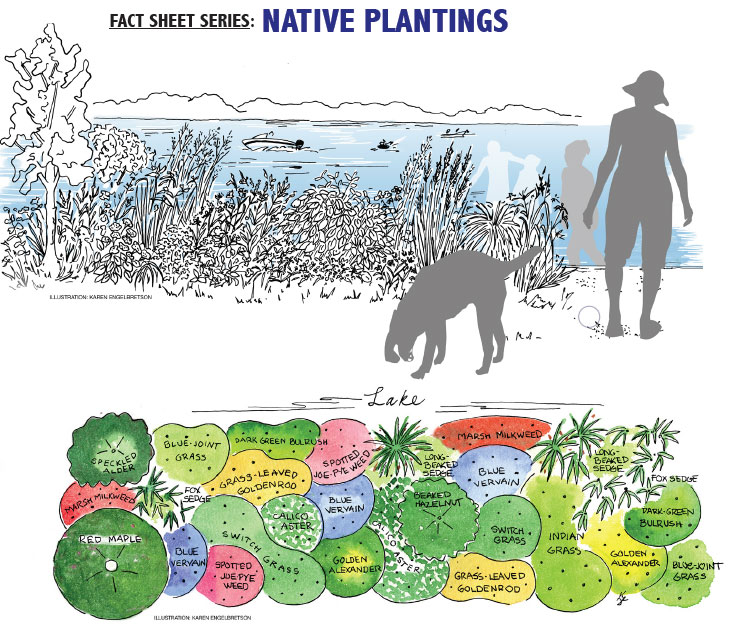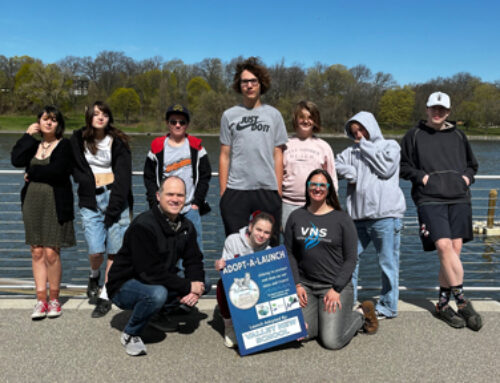Have you ever been frustrated with the presence of geese on your lawn? Has the presence of algae in front of your waterfront property caused you to not enjoy being at the cabin? Do you have a mosquito problem? Have you ever thought, how can I fix these problems?
The addition of a shoreland restoration project may be the solution to your waterfront problems.
A shoreland restoration project is the installation of a practice, usually native plantings, that restores a healthy transition from land to water. The goal of these types of projects is to help reduce run-off and erosion along the shoreline. The other benefits are less geese accessing your property, improved water quality in front of your cabin, and less mosquitos.
There are a few different options for shoreland restoration projects. There is also funding available to cover a portion of the costs of these projects.
The most common shoreland restoration project is reestablishing native plants within the riparian zone of your waterfront property. The riparian zone starts at the ordinary high-water mark and extends 35 feet inland. These projects should be a minimum of 350 contiguous square feet. The native plants used are made up of wild flowers, sedges, and grasses. If done correctly, these projects will bloom continuously throughout the summer. Shrubs and trees are also a welcome addition.
Examples of these types of projects can be found throughout Shawano and Menominee Counties. The Cloverleaf Lakes, Red Lakes, Glas Coffeehouse and Shawano Lake all contain great examples of these types of projects.

Red Lakes, Shawano County

Cloverleaf Lakes, Shawano County
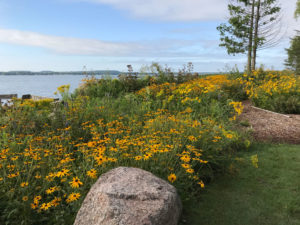
Whispering Pines, Shawano Lake, Shawano County
The flowering plants usually used in native plantings along the riparian zone are great deterrents for geese. Geese will not cross through plants taller than them because they are unable to see predators. Geese are attracted to manicured lawns because they can see predators’ approach from all angles.
Rain gardens are another great option, if a complete restoration of your shoreland is not for you. A rain garden is a landscaped area with native vegetation and wild flowers that soak up rain water. These gardens are usually placed near a home or other building to help capture the water coming off the roof or other impervious surface. These projects help catch polluted water that would otherwise cause run-off concerns, like algae. They are built to avoid standing water, so mosquitos are not a problem.
Funding for these projects is available. Shawano County Land Conservation Department is willing to fund up to 50% of shoreland restoration projects if the project follows the county’s guidelines. There is also funding available through the Wisconsin DNR through the Healthy Lakes Grants initiative. These funds cover up to 75% of projects that meet the WDNR guidelines. More information can be found here: https://healthylakeswi.com/
Funding can aid in the costs for a consultant to help create your project as well as the cost of materials.
For more information, contact your lake organization, Connecting Our Waters, your county conservationist, UW-Extension, or the WDNR. All these partners can help you complete a restoration project.
Emily Henrigills; Connecting our Waters Project Manager emily@fwwa.org; 920-851-6472
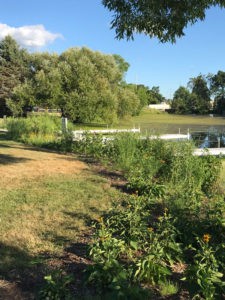
Glas Coffeehouse, Wolf River, Shawano County
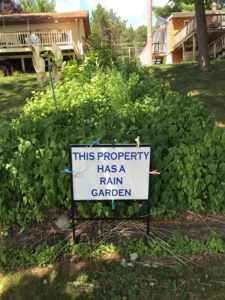
Cloverleaf Lakes, Shawano County

